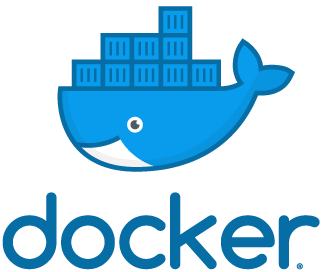Building a Prometheus, Grafana and pushgateway cluster with Kubernates

This article is my notes on practicing building a cluster of Prometheus, Grafana and pushgateway in Kubernates environment.
The repository is located at soudegesu/prometheus-pushgw-practice .
Goals
- Building a Prometheus, Grafana and pushgateway cluster with Kubernates
- Grafana references Prometheus as a datasource.
- Prometheus pull metrics from pushgateway.
For now, I will aim to build a cluster on a local machine. These goals outline is as shown in the following figure.

Environment
- Mac OS X
11.1 - Docker Desktop
3.0.0- Docker
20.1.0 - Kubernates
1.19.3
- Docker
Example of Kubernates configuration file
The procedure is based on this article and expanding the parts I want personally.
Specify the Kubernates Context
This time, specify docker-desktop.
1kubectl config use-context docker-desktopAlso, set the namespace to monitoring.
1kubectl create namespace monitoringCreate ClusterRole and ClusterRoleBinding
Create ClusterRole and ClusterRoleBinding. You can change kinds to Role and RoleBinding and use them.
1apiVersion: rbac.authorization.k8s.io/v1
2kind: ClusterRole
3metadata:
4 name: prometheus
5rules:
6- apiGroups: [""]
7 resources:
8 - nodes
9 - nodes/proxy
10 - services
11 - endpoints
12 - pods
13 verbs: ["get", "list", "watch"]
14- apiGroups:
15 - extensions
16 resources:
17 - ingresses
18 verbs: ["get", "list", "watch"]
19- nonResourceURLs: ["/metrics"]
20 verbs: ["get"]
21---
22apiVersion: rbac.authorization.k8s.io/v1
23kind: ClusterRoleBinding
24metadata:
25 name: prometheus
26roleRef:
27 apiGroup: rbac.authorization.k8s.io
28 kind: ClusterRole
29 name: prometheus
30subjects:
31- kind: ServiceAccount
32 name: default
33 namespace: monitoringCreate a pushgateway server
Next, create a definition for pushgateway.
A Deployment and a Service definition are in the following example.
Other Pods can access to pushgateway service with pushgateway-service:8120.
1apiVersion: apps/v1
2kind: Deployment
3metadata:
4 name: pushgateway-deployment
5 namespace: monitoring
6 labels:
7 app: pushgateway-server
8spec:
9 replicas: 1
10 selector:
11 matchLabels:
12 app: pushgateway-server
13 template:
14 metadata:
15 labels:
16 app: pushgateway-server
17 spec:
18 containers:
19 - name: pushgateway
20 image: prom/pushgateway:latest
21 ports:
22 - containerPort: 9091
23---
24apiVersion: v1
25kind: Service
26metadata:
27 name: pushgateway-service
28spec:
29 selector:
30 app: pushgateway-server
31 type: NodePort
32 ports:
33 - port: 8120
34 targetPort: 9091
35 nodePort: 30040Create a Prometheus server
Then, create definition of Prometheus. Create a ConfigMap in addition to Deployment and Service.
Define a configuration file (prometheus.yml) for Prometheus in ConfigMap and mount it.
Other Pods can access to Prometheus service with prometheus-service:8080.
1apiVersion: v1
2kind: ConfigMap
3metadata:
4 name: prometheus-server-conf
5 labels:
6 name: prometheus-server-conf
7 namespace: monitoring
8data:
9 prometheus.yml: |-
10 # my global config
11 global:
12 scrape_interval: 15s # Set the scrape interval to every 15 seconds. Default is every 1 minute.
13 evaluation_interval: 15s # Evaluate rules every 15 seconds. The default is every 1 minute.
14 # scrape_timeout is set to the global default (10s).
15 # Alertmanager configuration
16 alerting:
17 alertmanagers:
18 - static_configs:
19 - targets:
20 # - alertmanager:9093
21 # Load rules once and periodically evaluate them according to the global 'evaluation_interval'.
22 rule_files:
23 # - "first_rules.yml"
24 # - "second_rules.yml"
25 # A scrape configuration containing exactly one endpoint to scrape:
26 # Here it's Prometheus itself.
27 scrape_configs:
28 # The job name is added as a label `job=<job_name>` to any timeseries scraped from this config.
29 - job_name: 'prometheus'
30 static_configs:
31 - targets: ['localhost:9090']
32
33 - job_name: 'pushgateway'
34 honor_labels: true
35 metrics_path: /metrics
36 static_configs:
37 - targets: ['pushgateway-service:8120']
38---
39apiVersion: apps/v1
40kind: Deployment
41metadata:
42 name: prometheus-deployment
43 namespace: monitoring
44 labels:
45 app: prometheus-server
46spec:
47 replicas: 1
48 selector:
49 matchLabels:
50 app: prometheus-server
51 template:
52 metadata:
53 labels:
54 app: prometheus-server
55 spec:
56 containers:
57 - name: prometheus
58 image: prom/prometheus:latest
59 args:
60 - "--config.file=/etc/config/prometheus.yml"
61 - "--storage.tsdb.path=/prometheus/"
62 - "--storage.tsdb.retention=3d"
63 ports:
64 - containerPort: 9090
65 volumeMounts:
66 - name: config-vol
67 mountPath: /etc/config
68 volumes:
69 - name: config-vol
70 configMap:
71 name: prometheus-server-conf
72---
73apiVersion: v1
74kind: Service
75metadata:
76 name: prometheus-service
77spec:
78 selector:
79 app: prometheus-server
80 type: NodePort
81 ports:
82 - port: 8080
83 targetPort: 9090
84 nodePort: 30000 Create a Grafana server
Then, Create Grafana definition, In following sample, Deployment and Service and ConfigMap are defined.
The definition file is a little bit long, but I create a configuration file here as well with ConfigMap. The ConfigMap definition includes data source definition, dashboard definition, and dashboard configuration.
As for the dashboard settings, editing them from a configuration file is time-consuming, so it is better to export the definitions JSON file from the GUI and paste it.
1apiVersion: v1
2kind: ConfigMap
3metadata:
4 name: grafana-datasources-conf
5 labels:
6 name: grafana-datasources-conf
7 namespace: monitoring
8data:
9 datasources.yml: |-
10 apiVersion: 1
11 datasources:
12 - name: Prometheus
13 type: prometheus
14 access: proxy
15 orgId: 1
16 uid: 1
17 url: http://prometheus-service:8080/
18 basicAuth: false
19 editable: true
20 version: 1
21 isDefault: true
22---
23apiVersion: v1
24kind: ConfigMap
25metadata:
26 name: grafana-dashboards-conf
27 labels:
28 name: grafana-dashboards-conf
29 namespace: monitoring
30data:
31 dashboards.yml: |-
32 apiVersion: 1
33 providers:
34 - name: 'hoge'
35 orgId: 1
36 folder: ''
37 type: file
38 disableDeletion: true
39 editable: true
40 options:
41 path: /var/lib/grafana/dashboards
42---
43apiVersion: v1
44kind: ConfigMap
45metadata:
46 name: grafana-dashboards-settings
47 labels:
48 name: grafana-dashboards-settings
49 namespace: monitoring
50data:
51 hoge.json: |
52 {
53 "annotations": {
54 "list": [
55 {
56 "builtIn": 1,
57 "datasource": "-- Grafana --",
58 "enable": true,
59 "hide": true,
60 "iconColor": "rgba(0, 211, 255, 1)",
61 "name": "Annotations & Alerts",
62 "type": "dashboard"
63 }
64 ]
65 },
66 "editable": true,
67 "gnetId": null,
68 "graphTooltip": 0,
69 "id": 1,
70 "links": [],
71 "panels": [
72 {
73 "aliasColors": {},
74 "bars": false,
75 "dashLength": 10,
76 "dashes": false,
77 "datasource": "Prometheus",
78 "fieldConfig": {
79 "defaults": {
80 "custom": {}
81 },
82 "overrides": []
83 },
84 "fill": 1,
85 "fillGradient": 0,
86 "gridPos": {
87 "h": 9,
88 "w": 12,
89 "x": 0,
90 "y": 0
91 },
92 "hiddenSeries": false,
93 "id": 2,
94 "legend": {
95 "avg": false,
96 "current": false,
97 "max": false,
98 "min": false,
99 "show": true,
100 "total": false,
101 "values": false
102 },
103 "lines": true,
104 "linewidth": 1,
105 "nullPointMode": "null",
106 "options": {
107 "alertThreshold": true
108 },
109 "percentage": false,
110 "pluginVersion": "7.3.7",
111 "pointradius": 2,
112 "points": false,
113 "renderer": "flot",
114 "seriesOverrides": [],
115 "spaceLength": 10,
116 "stack": false,
117 "steppedLine": false,
118 "targets": [
119 {
120 "expr": "go_gc_duration_seconds",
121 "interval": "",
122 "legendFormat": "",
123 "refId": "A"
124 }
125 ],
126 "thresholds": [],
127 "timeFrom": null,
128 "timeRegions": [],
129 "timeShift": null,
130 "title": "Panel Title",
131 "tooltip": {
132 "shared": true,
133 "sort": 0,
134 "value_type": "individual"
135 },
136 "type": "graph",
137 "xaxis": {
138 "buckets": null,
139 "mode": "time",
140 "name": null,
141 "show": true,
142 "values": []
143 },
144 "yaxes": [
145 {
146 "format": "short",
147 "label": null,
148 "logBase": 1,
149 "max": null,
150 "min": null,
151 "show": true
152 },
153 {
154 "format": "short",
155 "label": null,
156 "logBase": 1,
157 "max": null,
158 "min": null,
159 "show": true
160 }
161 ],
162 "yaxis": {
163 "align": false,
164 "alignLevel": null
165 }
166 }
167 ],
168 "schemaVersion": 26,
169 "style": "dark",
170 "tags": [],
171 "templating": {
172 "list": []
173 },
174 "time": {
175 "from": "now-6h",
176 "to": "now"
177 },
178 "timepicker": {},
179 "timezone": "",
180 "title": "sample",
181 "uid": "UpBk6EfGz",
182 "version": 1
183---
184apiVersion: apps/v1
185kind: Deployment
186metadata:
187 name: grafana-deployment
188 namespace: monitoring
189 labels:
190 app: grafana-server
191spec:
192 replicas: 1
193 selector:
194 matchLabels:
195 app: grafana-server
196 template:
197 metadata:
198 labels:
199 app: grafana-server
200 spec:
201 containers:
202 - name: grafana
203 image: grafana/grafana:latest
204 # args:
205 # - "--config=/etc/config/datasources/datasources.yml"
206 ports:
207 - containerPort: 3000
208 volumeMounts:
209 - name: datasources-config-vol
210 mountPath: /etc/grafana/provisioning/datasources
211 - name: dashboards-config-vol
212 mountPath: /etc/grafana/provisioning/dashboards
213 - name: dashboards-settings-vol
214 mountPath: /var/lib/grafana/dashboards
215 volumes:
216 - name: datasources-config-vol
217 configMap:
218 name: grafana-datasources-conf
219 - name: dashboards-config-vol
220 configMap:
221 name: grafana-dashboards-conf
222 - name: dashboards-settings-vol
223 configMap:
224 name: grafana-dashboards-settings
225---
226apiVersion: v1
227kind: Service
228metadata:
229 name: grafana-service
230spec:
231 selector:
232 app: grafana-server
233 type: NodePort
234 ports:
235 - port: 8100
236 targetPort: 3000
237 nodePort: 30020apply definitions
Finally, run the kubectl apply command to deploy the container.
1kubectl apply -f ${name of pushgateway k8s file}.yml -n monitoring
2kubectl apply -f ${name of prometheus k8s file}.yml -n monitoring
3kubectl apply -f ${name of grafana k8s file}.yml -n monitoringOpen the dashboard of Docker Desktop and you can see the deployment container has been created successfully. After that, open your browser and access the following URL to make sure that the service console is displayed.
- Prometheus:
http://localhost:30000/ - grafana:
http://localhost:30020/
Conclusion
Created a configuration to build Prometheus, Grafana and pushgateway in the Kubernates In the scope of this work, the storage volume of Prometheus is not mounted externally, so if you need it, please configure it accordingly.


